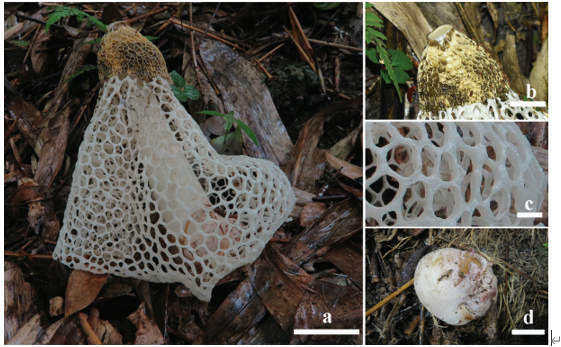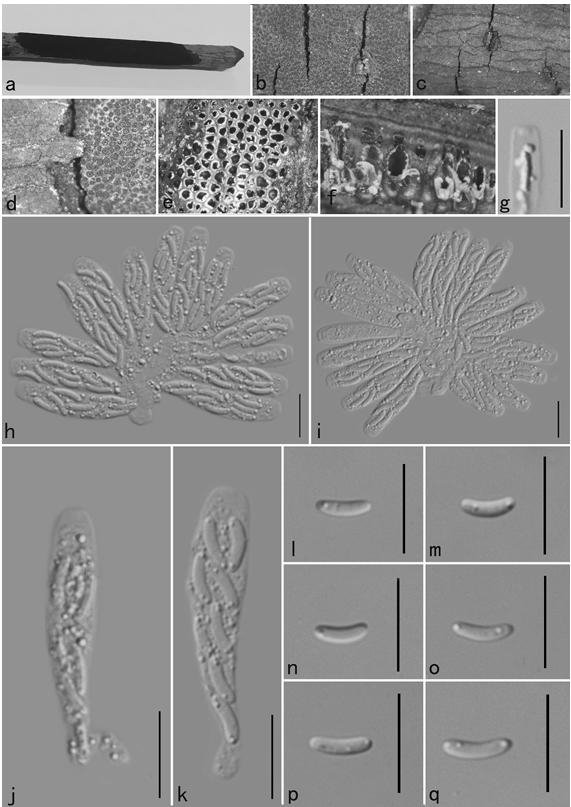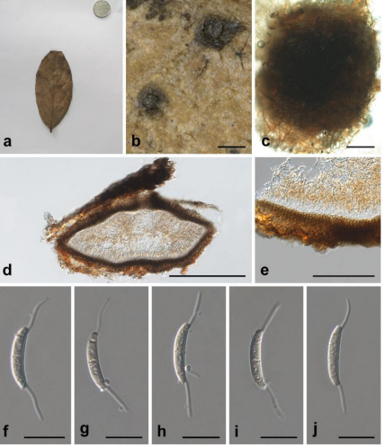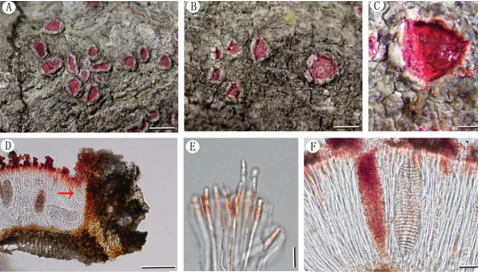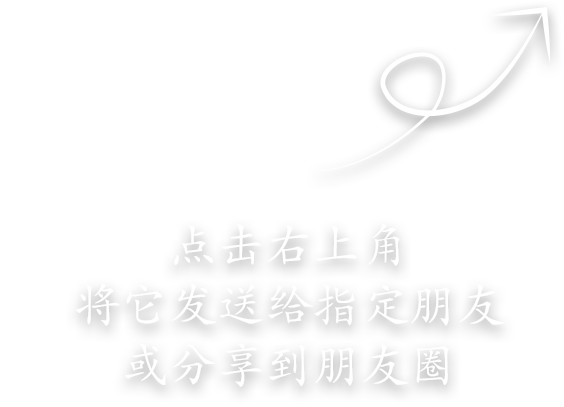Letendraea magnoliae N.I. de Silva & Lumyong, sp. nov. 2021
MycoBank Index Fungorum number: IF556134; Facesoffungi number: FoF09492
Holotype: MFLU 19–0517
Morphological description
Sexual morph:sporulated on PDA. Ascomata 150–250 µm diam., brown, semi-immersed to superficial covered with mycelia, globose to subglobose, solitary or aggregated. Hamathecium not observed. Peridium 10–15 μm wide, composed of 7–8 layers, thin-walled with equal thickness, small, flattened pseudoparenchymatous, brown cells of textura angularis. Asci (immature asci) 40–50 × 4–7 µm (x= 46 × 6 µm), 8–spored, bitunicate, cylindrical-clavate, slightly curved, sessile. Ascospores 14–16 × 2–4 µm (x= 15 × 3 µm), olivaceous brown, ellipsoidal to fusiform, straight or slightly curved, one septate, acute at both ends, thick-walled with guttules.
Asexual morphs:Cultures: Colonies on PDA reaching 25 mm diameter after 7 days at 25°C, colonies circular, margin entire, flat to slightly raised, dense, velvety appearance, orange mycelia and colony from above: orange; reverse: orangish brown.
Habitat: healthy leaves of Magnolia candolli (Magnoliaceae)
Distribution: CHINA, Yunnan Province, Xishuangbanna.
GenBank Accession: ITS: MW222160, tef1: MW233021.
Notes: Letendraea magnoliae obtained from healthy leaves, clustered distinctly and basal to other Letendraea species in combined LSU, SSU, ITS and tef1 phylogenetic analysis with 100% 184 ML, 100% MP and 1.00 BYPP support (Fig. 10). Ascospores of L. brasiliensis and L. cordylinicola differ from L. magnoliae in having mucilaginous sheath while L. magnoliae lacks mucilaginous sheath. Letendraea cordylinicola has distinct appendage at both ends whereas L. magnoliae does not have appendages. Letendraea magnoliae differs from L. eurotioides and L. helminthicola in having ascospores with acute ends. Letendraea eurotioides and L. helminthicola have ascospores with rounded ends.
Reference: de Silva NI, Maharachchikumbura SSN, Thambugala KM, Bhat DJ, Karunarathna SC, Tennakoon DS, Phookamsak R, Jayawardena RS, Lumyong S, Hyde KD 2021 – Morphomolecular taxonomic studies reveal a high number of endophytic fungi from Magnolia candolli and M. garrettii in China and Thailand. Mycosphere 11(1), 163–237, Doi 10.5943/mycosphere/12/1/3
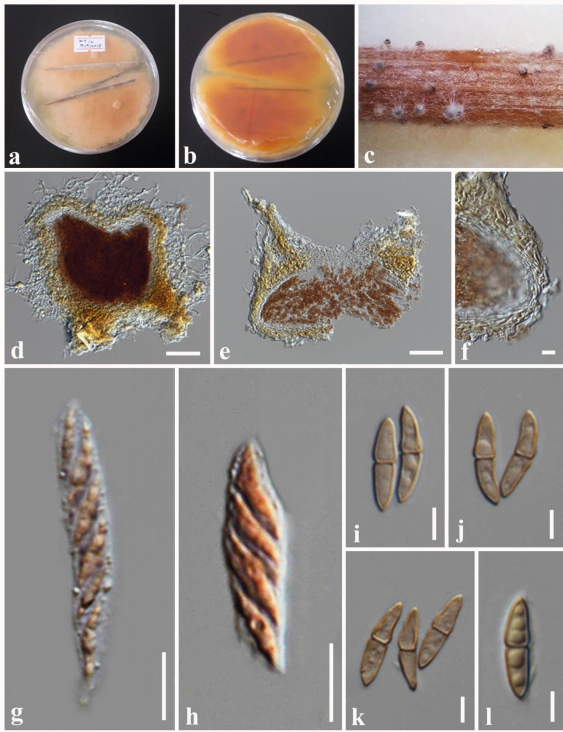
Letendraea magnoliae (MFLU 19–0517, holotype). a, b Colonies on PDA (upper view and lower view). c Ascomata on a pine needle. d, e Sections through ascoma. f Peridium. g, h Immature asci stained in congo red. i–l Ascospores. Scale bars: d, e = 50 μm, f–h = 10 μm, i–l = 5 μm.


